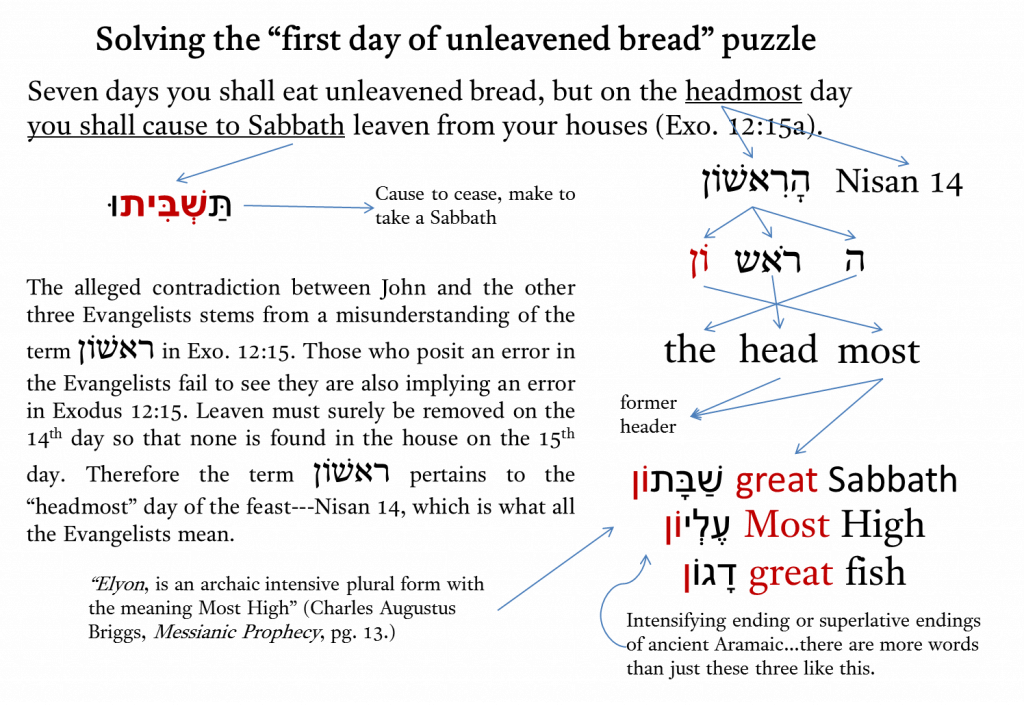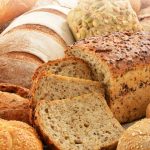Was Jesus’ Last Supper a Passover Seder?
To answer this one must fully understand the chronology and timing of the 1) Passover and the Exodus from Egypt and the 2) death, burial and resurrection of the Messiah in the first-century and how they both perfectly correlate and synchronise together. We must first understand the correct, scriptural and biblical definition of “evening/setting and morning/daybreak” phrase outlined in the literal day of creation as first defined in Gen. 1:3-5. Judaism and Christianity abandoned this cycle post 70 AD and the destruction of the 2nd-Temple
Understanding the standard calendar day to be from dawn to dawn is essential to understanding practically everything in biblical chronology having to do with days. Correct observance of the Torah and The Appointed Times is otherwise bound to go off track, or at the very least to be rendered confusing. Correct understanding of the Levitical services and how days are timed for offerings depends wholly on the dawn to dawn day and is necessary to properly understand Messiah’s death and resurrection and the prophesies of the ‘third day.’
Young’s Literal Translation states the following:
YLT Numbers 28:1 And Jehovah speaketh unto Moses, saying, 2 ‘Command the sons of Israel, and thou hast said unto them, My offering, My bread for My fire-offerings, My sweet fragrance, ye take heed to bring near to Me in its appointed season. 3 ‘And thou hast said to them, This {is} the fire-offering which ye bring near to Jehovah: two lambs, sons of a year, perfect ones, daily [to the day], a continual burnt-offering; 4 the one lamb thou preparest in the morning, and the second lamb thou preparest between the evenings [between the settings / בֵּין הָעַרְבָּיִם bēi̱n ha‘arbayim]. The first lamb is NOT offered on one day in the morning, and then the second lamb on the next day after sunset. No. The two lambs are offered the same day to meet the requirement that “two lambs” are offered “to the day“, or “daily”. YLT above has it correctly rendered.
| The First Exodus Passover 1632 BC. | The Passion Passover 34 AD. |
| The Passover was therefore to be sacrificed “between the evenings”. This literally means between noon and the end of daylight, so around about 3 p.m. | Yeshua was put on the cross at the 3rd hour of the day (9 a.m.), and he died at the 9th hour of the day (3 p.m.). This is when he was slain, exactly at the hour the other Passover lambs were being killed in the Temple in 34 AD. |
| Exodus 12:6 And ye shall keep it as far / (until) as the fourteenth day of the same month. The Hebrew word (aḏ עַ֣ד https://biblehub.com/hebrew/5704.htm) actually means at least up to a certain point, but does not define how far past that point. The English word “until” implies only up to the point indicated. But the Hebrew does not. A fine distinction indeed, but critical to understand. With this in mind, we are now ready to understand “until the fourteenth day” as “as far as the fourteenth day”. But how far after this point do we go? The text tells us as far as we reach that time of “between the evenings“, a period of time which is proven to come AFTER the morning sacrifice of that same day. |
Again, this is equal to the 9th hour of the day, or 3 p.m. in the afternoon of 14 Aviv, which was March 25, in 34 AD.
So the keeping of it as far as mid-afternoon would qualify the 14 Aviv as when the Passover Seder was partaken of which would be after sunset of the SAME day. The appointed time of the Feast of the Unleavens is titled a preparation day on the 14 Aviv and officially begins with the partaking of the Passover Seder meal the SAME day after sunset. Mat 27:48 ζ Two drinks were offered to Mĕssiah during his suffering: He refused to drink the wine (Mat. 27:34; Mark 15:23) on the basis of Mat. 26:29, Mark 14:25, and Luke 22:18. The word for vinegar here is chametz / (kho’-mets) חמֶֹץ , which in the Septuagint Greek is ὄξος (óksos), and is the same word used in all the vinegar texts. https://biblehub.com/greek/oxos_3690.htm. Vinegar can be made from apples, palms, figs, and fermented grain extract or malt vinegar. Some Vinegar is chametz (like malt vinegar, because it is a grain based fermentation), and other vinegar is not (such as apple cider vinegar or wine vinegar), but if you are not sure, then do not use vinegar at Passover. ▶ Therefore, Yĕshua consumed a fermented product on the eve of Passover. This shows like the other example above that the day was the preparation day for Passover, and the feast of unleavened bread had not yet begun. a. The Hebrew word for a grain based leavening agent (yeast) is: שְׂארֹ se’or. b. חָםץֵ chametz is a leavened product, such as bread, wine, or beer, made with .שְׂארֹ and חמֶֹץ is a vinegar product made from שְׂארֹ . ▶ Both the leavened product, chametz and the grain based leavening agent, se’or, are forbidden during the seven days of unleavened bread. See Exodus 12:15, “On the headmost day you shall make cease leavening (se’or) from your houses, because anyone eating leavened products ( chametz) also will have been cut off that soul from Yisra’ҽl, from the first day until the end of the seventh.” |
 |
|
| HAMETS During Pesah we are not allowed to eat, benefit from or even posses anything Hamets. But, what exactly is Hamets?Hamets (or Chametz) is any fermented substance – solid or liquid – that comes from one of the following five grains: wheat, rye, spelt, barley and oats.  The Hamets fermentation takes place only after eighteen minutes have passed from the moment one of these grains or one of their by-products comes in contact with water. The following three factors need to be present simultaneously for a food to be considered Hamets.(i) Flour or any other product derived from one of the above mentioned five grains. A fermented food product which is not or that does not contain any element coming from one of the five grains, like rice or corn, is not Hamets. The Hamets fermentation takes place only after eighteen minutes have passed from the moment one of these grains or one of their by-products comes in contact with water. The following three factors need to be present simultaneously for a food to be considered Hamets.(i) Flour or any other product derived from one of the above mentioned five grains. A fermented food product which is not or that does not contain any element coming from one of the five grains, like rice or corn, is not Hamets.(ii) Water: when flour coming from one of the five grains is mixed exclusively with pure fruit juice, without water, the dough is not considered Hamets but Matsa Ashira. (iii) Time. The Matsa has two of the three elements that makes a product Hamets: flour and water. But it is entirely baked before eighteen minutes have passed from the moment water and flour came in contact. Time, therefore, is the main difference between Hamets and Matsa. Some common examples of Hamets products are: Bread, pasta, crackers, cookies, fibre-drinks, cereals, baby foods, whiskey and beer. SE-OR The prohibition of Hamets includes another element, a food additive which the Torah calls se-or (שאור). Se-or (grain yeast) is a catalyzer of the fermentation process. While Hamets is intended for eating, se’or is a leavening agent in preparing to prepare Hamets foods. In other words, once you have a dough, flour and water, mixed together the fermentation process could take place in 18 minutes, or you can add se-or / yeast and the fermentation process will be faster. All the prohibitions of Hamets apply to se-or as well. |
|